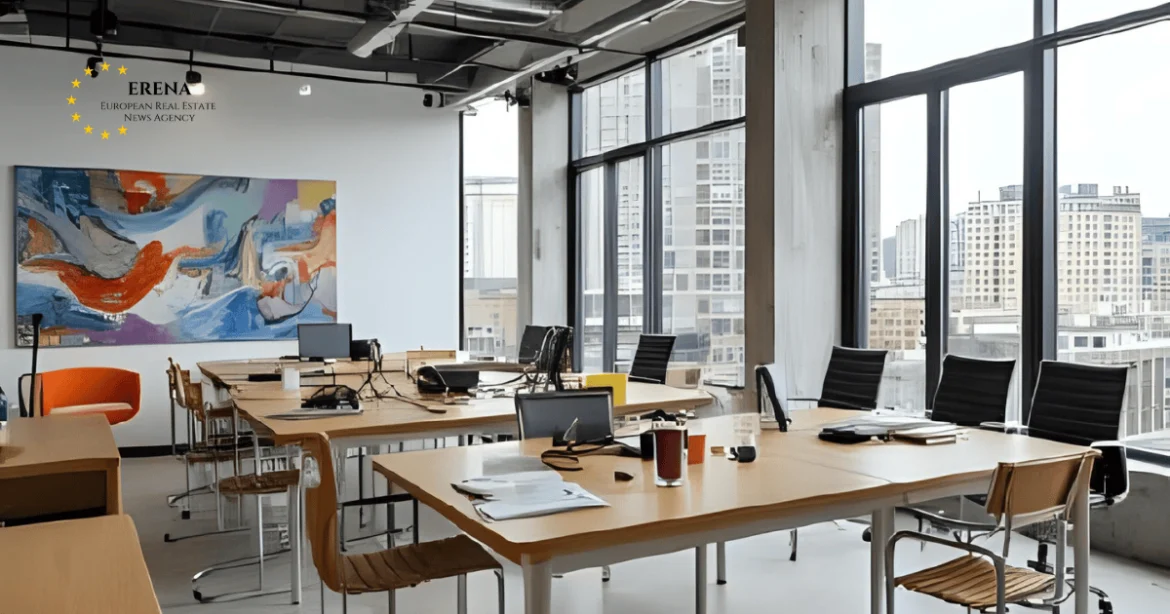Europe’s commercial real estate market is entering one of its most challenging phases in more than a decade, with investment flows shifting sharply toward prime, energy-efficient assets and away from outdated, non-core properties. According to MSCI, transaction volumes in the second quarter of 2025 fell to around €46.2 billion, about 10% lower than a year earlier. In the first half of the year, total investment reached €91.7 billion, a 7% decline compared with the same period in 2024, highlighting investors’ growing caution amid economic uncertainty.
Although the European Central Bank cut its deposit rate to 2%, borrowing costs remain significantly higher than before the pandemic. Financing is still expensive, particularly for value-add strategies and properties requiring substantial capital expenditure to meet ESG standards. As a result, liquidity is concentrating in the safest segment of the market, with most capital targeting top-tier, income-secure assets.
Why Office Investment Faces Pressure as Vacancy Rates Surge
The office sector remains the weakest performer. In Germany, office transaction volumes in Q2 dropped to just €765 million, contributing to a half-year total of €2.1 billion — a steep 23% decline year-on-year. Despite prime rents rising by 11–12% in Frankfurt and Munich, vacancy rates have climbed to 7.7% across the “Big Seven” markets, leaving 7.6 million m² of space unoccupied.
Prime office yields across Europe’s leading cities now average around 5%, with core assets in central German markets reaching approximately 5.1%, according to CBRE. In contrast, secondary assets face a far more difficult environment, often trading at significant discounts or attracting little buyer interest. Many older offices require costly sustainability upgrades to remain competitive, and most investors are unwilling to take on that risk under current financing conditions.
The divide between prime and secondary stock is widening. Centrally located, high-quality offices continue to attract institutional capital, while outdated buildings in peripheral locations struggle to sell — even when heavily discounted.
How Retail Investment Lost Momentum After a Strong Q1 Surge
The retail sector started 2025 strongly, with investment volumes up 26% year-on-year in Q1 to around €8.4 billion, supported by several large transactions in Spain and Portugal. However, momentum weakened in Q2 as rising borrowing costs and shifting consumer behavior undermined confidence.
In Germany, retail investment volumes fell 19% in the first half to €2.9 billion, accounting for roughly 20% of total commercial property investment. Prime yields currently stand at 3.5% for high-street units, 4.6% for retail parks, and 5.9% for dominant shopping centers. Older malls with weaker tenant mixes remain illiquid, often sitting on the market for months without serious offers.
Several significant deals still highlight ongoing demand for high-quality retail. Castellana Properties acquired the Bonaire Mall in Valencia for €305 million at a yield of around 7%, while Dublin’s Jervis Shopping Center received offers near €110 million, slightly below its guide price — a sign that buyers remain highly price-sensitive.
What Country-Level Trends Reveal About Europe’s Fragmented Market
- United Kingdom: Q2 investment volumes fell 11% to €13.9 billion. London remains relatively resilient, but regional markets continue to underperform.
- Germany: Total H1 volumes reached €14.2 billion (-2% YoY), with office investment down 23% and retail down 19%.
- France: Transactions are concentrated in prime CBD properties with long-term leases, while secondary assets attract limited attention.
- Spain and Portugal: Large shopping center deals, including Bonaire (€305 million) and an ongoing partial sale of a stake in Xanadú, have supported volumes, but selectivity remains high.
Key Forces Driving Europe’s Commercial Investment Slowdown
Several structural forces are shaping the market’s current trajectory:
- Expensive financing: Even after ECB rate cuts, borrowing remains costly, particularly for assets needing refurbishment or repositioning.
- Private credit competition: In H1 2025, private debt funds raised nearly $40 billion in Europe — almost double the amount raised by traditional property funds.
- Policy uncertainty: Trade tensions, regulatory changes, and geopolitical instability are delaying investment decisions.
Prime Yields, Pricing Trends, and What They Signal for Investors
- Prime offices: Yields remain close to 5%, while secondary assets trade at steep discounts.
- Core retail: Dominant shopping centers with strong footfall achieve 6–7%+ yields, while weaker centers are virtually unsellable.
- Distress sales: Insolvency-driven transactions are becoming increasingly common as refinancing pressures grow.
What Real Estate Investors Should Focus On in 2025
The steep decline in office and retail transactions across Europe is more than just a cyclical downturn — it signals a deeper structural realignment of investor priorities. Capital is increasingly concentrating in prime, ESG-compliant assets with stable income streams, while outdated properties face steep discounts, refinancing challenges, and even the risk of obsolescence.
Analysts expect the remainder of 2025 to be dominated by single-asset deals and mid-sized transactions (€20–50 million), with large portfolio sales remaining rare. Europe’s property market is no longer defined by transaction volume but by selectivity, resilience, and polarization — trends that are set to shape the next phase of the investment cycle.

